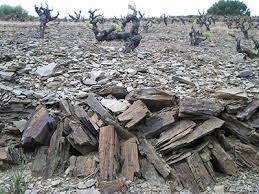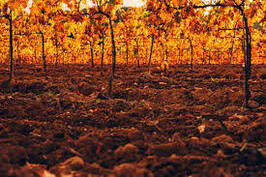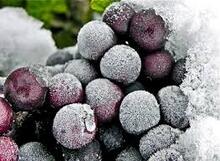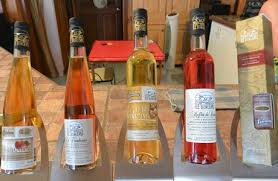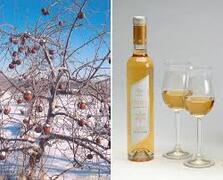|
BODEGAS ALMIJARA S.L. CÓMPETA- Málaga -DENOMINACIÓN DE ORIGEN: “SIERRAS DE MÁLAGA” VARIEDAD: 100% Romé La Romé es una variedad de uva tinta propia de Andalucía, autóctona de la zona de Málaga. Su cultivo se da principalmente en la comarca de la Axarquía. UVA SECRETA, POCO CONOCIDA Y MISTERIOSA Cómpeta, en plena Axarquía malagueña, se encuentra situada a unos 636 metros de altitud sobre el nivel del mar, y en las faldas de las Sierras Almijara y Tejeda que constituyen un impresionante macizo montañoso, formando barrera geográfica entre las provincias de Málaga y Granada mediante su línea de cumbres, entre las que se encuentra, “la Maroma”, con 2.068 metros de altura. En este espectacular enclave, encuentra su ubicación Bodegas Almijara, pequeña, familiar y tradicional bodega con mucho encanto. Jarel es un vino que proviene de una uva tinta autóctona de los suelos pizarrosos de la Axarquía malagueña. Destacan su mineralidad y frescura, naturaleza. En boca es aterciopelado, sabroso y seco. Un vino sutil y armonioso, con recuerdos salinos y ancestrales en el postgusto. CATA: Tiene buena graduación alcohólica propia de las maduraciones en climas cálidos, y baja acidez. Notas vegetales, yodo y esquisto en nariz. Expresivo y franco en paladar. Su color me recuerda a ese toque rojo-naranja de las salsas agri-dulces , limpio y brillante. Marida muy bien con carnes y chacinas ahumadas. Y musicalmente hablando…me decidí por un tema precioso y evocador con solo flauta travesera, “Zyriab” de Jorge Pardo. Sin duda es un vino muy especial, particular, diferente, con personalidad y matices muy diferentes a cualquier rosado que estemos acostumbrados …O te enamora después del segundo sorbo o no llegas a conectar con él…Un placer poder deleitar este insólito vino, de muy poca producción , no disponible cada añada y solo para gente de exquisito paladar y con ese sentido para apreciar su esencia. Gracias María Ávila por reservar unas botellas para mí! Sus racimos son medianos y poco compactos, con pequeñas uvas redondas de color granate. Una de las peculiaridades de esta uva de piel gruesa es que en un mismo racimo se pueden encontrar uvas blancas, rosas y tintas. La Romé es una uva con poca materia colorante, que aguanta mucho el calor, de la que se saca un vino excelente con un sabor muy peculiar. Resurge la Romé, que es mucho menos conocida que la uva moscatel pero con la expresividad que tienen las uvas malagueñas. Actualmente sólo un par de bodegas de la Axarquía trabajan con esta variedad autóctona cuyos viñedos apenas se pueden ver en algunas parcelas de la Alta Axarquía y de Ronda. Antiguamente se usaban para dar color a los dulces, pero tiene cualidades suficientes para servir de base de los tintos. UN POQUITO DE HISTORIA: El primer testimonio histórico que conocemos de la elaboración de vino en Málaga, data del Bajo Imperio Romano y consiste en depósito prismático de fermentación descubierto en Cártama, a unos treinta kilómetros de la capital. Durante la dominación árabe se entabló una dura lucha entre las normas coránicas que prohibían el consumo de vino y la costumbre de beberlo, que había arraigado en nuestro pueblo. Poco a poco y con altibajos, los fuertes castigos -hasta pena de muerte para los borrachos- se sustituyeron por multas (garima), que progresivamente se transformaron en impuestos (qabäla), que debían pagar los vendedores de vinos y que llegaron a constituir uno de los recursos más importantes del Estado. En el siglo XIX la plaga de Filoxera acabó con las viñas que a día de hoy vuelven a tomar posiciones gracias a viticultores que han apostado por los vinos axárquicos extraídos de los suelos pizarrosos de la comarca. Su uso será la única forma de que no desaparezca. Si no se utiliza para elaborar vinos, los agricultores acabarán por no plantar viñas nuevas de esta variedad “En el momento en que tiene un fin aseguramos que no se extinga”. 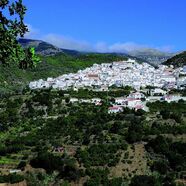 JAREL ROSÉ BODEGAS ALMIJARA S.L. CÓMPETA- Málaga - DENOMINATION OF ORIGEN: “SIERRAS DE MÁLAGA” GRAPE: 100% Romé Romé is a variety of red grapes from Andalusia, native to the area of Malaga. Its cultivation occurs mainly in the region of Axarquía. SECRET, LITTLE KNOWN AND MYSTERIOUS GRAPE Cómpeta, in the middle of Malaga's Axarquía, is located at about 636 meters above sea level, and on the slopes of the Sierras Almijara and Tejeda that constitute an impressive mountain range, forming a geographical barrier between the provinces of Malaga and Granada through its line of summits, among which is "La Maroma", with 2,068 meters high. In this spectacular enclave, Bodegas Almijara is located, family-run, small, and traditional winery with lots of charm. 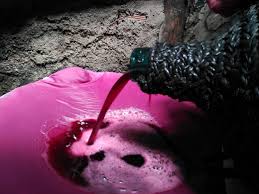 Jarel is a wine that comes from an indigenous red grape from the slate soils of the Malaga Axarquia. They emphasize its minerality and freshness, with hints of fresh , wild nature touch. In the mouth it is velvety, tasty and dry. A subtle and harmonious wine, with saline and ancestral memories in the aftertaste. TASTING : Good alcoholic graduation typical of ripening in hot climates, and are usually accompanied by low acidity. Vegetable notes, o Vegetable notes, iodine and shale on the nose . Expressive and candid on the palate. It has little colour but a lot of strength in the mouth. Its color reminds me of that red-orange touch of sweet and sour sauces, clean and bright. It pairs very well with smoked meats and especially with beef jerky. And musically speaking ... I decided on a beautiful and evocative song with only a transverse flute, "Zyriab" by Jorge Pardo.  Undoubtedly it is a very special, particular, different wine, with personality and nuances very different from any rosé we are accustomed to ... Either you fall in love after the second sip or do not get to connect with it ... A pleasure to delight this unusual wine, of very little production, not available every vintage and only for people with exquisite palate and with that sense to appreciate its essence. Thank you Maria Ávila for reserving some bottles for me! A grape that withstands a lot of heat, from which an excellent wine is extracted with a very peculiar flavour. Its clusters are medium and not very compact, with small round garnet-coloured grapes. One of the peculiarities of this thick-skinned grape is that in the same cluster you can find white, pink and red grapes. Romé is a grape with little colouring matter. Much less known than the Muscat grape but with the same expressiveness. Currently only a couple of wineries in the Axarquía work with this native variety whose vineyards can barely be seen in some plots of the High Axarquía and Ronda. Formerly it was used to give color and character to sweet wines. A little history... The first historical testimony we know of the winemaking in Malaga, dates from the Lower Roman Empire and consists of a prismatic fermentation tank discovered in Cártama, about thirty kilometers from the capital. During the Arab domination a hard fight began between the Corán rules that prohibited the consumption of wine and the habit of drinking it, which had taken root in our town. Gradually and with ups and downs, the heavy punishments - even the death penalty for drunkards - were replaced by fines (garima), which gradually became taxes (qabäla), which the wine sellers had to pay and which became one of the most important resources of the State. In the nineteenth century, Phylloxera plague, ended the vineyards that are now taking positions again thanks to winemakers who have opted for Axarquía wines extracted from the slate soils of the region. Its use will be the only way it does not disappear. If it is not used to make broths, the farmers will end up not planting new vines of this variety "At the time it has a purpose we ensure that it does not die out"
1 Comentario
 In the small Canadian city of Beamsville, about 40 miles west of Niagara Falls, a small group of crouching silhouettes moves in a moonligth vineyard on a cold January night. They are picking up their harvest of grapes, totally frozen, from Gewürztraminer. With a starry sky, and ice crystals shining in the air, the temperature has fallen to -10º C: they are the ideal conditions for the collection of fruit with which the 'icewine' will be made, the ice wine of this vintage. " It is likely that on some occasion you have heard of ice wine. That is why I am going to dedicate this article to this unique product, explaining its origin, evolution and, above all, the difference between ice wine and "freezer" wine. At the beginning of the 18th century, when Louis XV offered Madame de Pompadour a glass of Tokaj sweet wine, the monarch referred to it as “ Kings wine, king of wines ” and the poor did not have time to taste it ... If so, I would have had serious doubts and competition with this ice elixir. The wine of ice, scarce, rare, special, little known, the eiswein, is one of those magical wines ... It is a sweet wine made with naturally frozen grapes in the vineyard. The time and conditions of their harvest as well as the areas where they are obtained is what makes it special. There are white, rosé, red and even ice cider. They are tasty wines, with deep and sweet aromas, but soft and with an intense acidity. Named in English ice wine and in French vin de glace, it uses the technique of over-ripening of the grape in the strain until frost occurs. 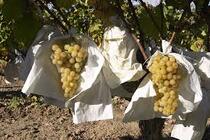 The grapes with which they are made are generally white, such as Riesling, Vidal (hybrid) banned in Europe, but popular in Canada - or Gewürztraminer, although there are also inks, such as Pinot Noir or Cabernet Sauvignon. Ice wines do not depend on a specific grape variety, but on a type of viticulture and winemaking. The grapes must be harvested by hand in a frozen state in the cluster and pressed with the ice crystals, which causes a high concentration of sugars and acids due to dehydration, thereby improving the extraction of aromatic compounds. At the beginning of August the grape is selected and the clusters are even put in paper bags (similar to those of the Vinalopó grape) to preserve them and ripen more slowly since the sun does not affect so directly. It is a wine that always works with the uncertainty of whether it will freeze enough to be able to harvest since it is necessary to obtain a concentrated, very ripe grape that will take time to ferment. On the other hand, this type of wine is obtained in cold regions of countries with low temperatures. Ice wines are made in Canada - which is the world's largest producer -, United States, Germany, Austria, Switzerland and Luxembourg. In Spain, ice wines have been successfully produced in Rueda, with the Verdejo variety, in La Rioja, Palencia ... among others, with Tempranillo and Garnacha red varieties. Currently, the European Union recognizes that an ice wine can be considered that way when they use frozen grapes or that they were in the strain at the time of harvesting and pressing. It is required that all grapes come from the same recognized region. Its difficulty and shortage, because not all producers are willing to make this type of wine and that there must be very specific climatic conditions (not every year it is possible to make these wines), justify its high market price, which They have turned this type of wine into authentic "oenological jewels," according to many authors. The 'cryo extraction' or cold extraction, is a process by which grapes are artificially frozen and pressed, usually with the intention of making ice wines artificially. Through this system, sweet or semi-sweet white wines are obtained, although this system is increasingly used in the production of dry and aromatic white wines. The winemakers try to recreate the same natural conditions that occur in the production of authentic ice wines. Selected grapes are subjected to temperatures below zero (-6 ° or -7 ° C), to be pressed when they are still frozen. Although it is a widely used winemaking technique that results in very interesting wines, the European Union does not allow them to be called "ice wines" since the grapes have been frozen by artificial methods. Curiously there is also "Ice Cider." In Spain the Asturian is famous and refers, for example, to what happened to the Germans with the grape to make wine or to the Canadians, who were frozen apples to make cider waiting for a ripening conducive to a high sugar content and / or alcohol. Of necessity, virtue: pressing the frozen fruit loses water and the must is more concentrated. The procedure was already applied by some cider maker in Asturias and the Denomination of Origen admitted it not long ago. Then, it has been incorporated by the brand El Gaitero, willing to standardize the renewal of that product beyond its crammed cider, and the result is called 1898, which is the year to which its winery goes back. This Asturian ice cider is a fruity ripe and sweet elixir, but the notes of lemon or tangerine, along with those of roasted apple— and a fresh acidity make it not cloying. Spend three months in barrel. What do we drink it with? It is a wine that is enjoyed a lot by itself, slowly, with kisses, as I like to call it to me, conversing with it slowly and with attention. Especially Canadians are very easy to enjoy, expressive and frank wines from the start. Germans usually need a little more time, both from bottle aging and freshly served by the glass. Some German ice wines appreciate even the decantation. I like it as an appetizer, since high acidity makes us salivate and saliva prepares the stomach for digestion. Great with any type of foie gras, hot or cold, and wonderful with almost any type of cheese, although maybe a little less with goat's. If we accompany it with desserts, the ideal is that the dessert is not sweeter than the wine, so great with any type of fruit. With dark chocolate, better red ice wines (although generally they are pink in sight). For the more daring, they work very well with pickles: the Vidal grape with orange duck and with some spicy Asian food, especially with Thai. The Pinot Noir is recommended couple with some deer loins. ITS ORIGIN: The origin of these wines dates back to the 18th century in the Franconia region (north of German Bavaria). Due to some circumstances of necessity, since the grapes were frozen and the wine growers did not want to resign themselves to lose the harvest, they decided to try the use of what they could of the frozen grapes, getting a very sweet and very appreciated wine that pleased who It proved and was an absolute success, which forced them to persist later in the system. However, large quantities of grapes were lost at that time due to the great fermentation problems. They also say that… In Dromesheim, in the Rheinhessen wine region (south-west of Germany) there is more documentation about an 1829 vintage, which has served the wineries in the area to proudly display a memorial sculpture with the legend «Dromesheim, birthplace of the Ice Wine », something that apparently does not belong to them, but that's the way it is. In that very hard winter of 1829 the forage for the animals was scarce and many vineyard owners decided to leave the grapes in the vineyard to feed the cattle during the winter ... Until some tasted a grape and, being surprised at the sweetness and acidity they contained, they decided to press and make the wine. |
irene sayasEntusiasta y conocedora de la magia del vino. El vino evoca, convoca y provoca... *Archivos:
|
Cómo contactarnos / How to contact usTeléfono 690 073 871 |
Suscribirse / SubscribeÚnete a nuestra lista de correo hoy!
Sign up to our mailing list now! |




